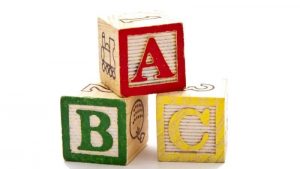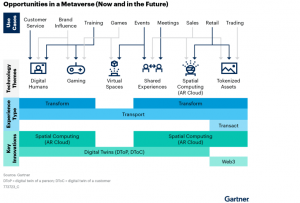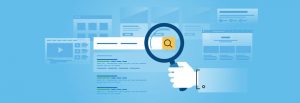In one of the findings gathered from surveyed employees, G2 shared that 43% of them sought job opportunities elsewhere due to the company culture.
That is an alarming rate that can cost almost half of your workforce! That is why it’s necessary to find people who match your company culture, and you can do that through personality tests.
Here, we’ll be sharing the intertwining connection between personality and company culture, what benefits do such tests bring, and how you can integrate them into your recruiting process.
What’s the Connection: Company Culture and Personalities
By definition, company culture is the set of fundamental values, attributes, and characteristics of an organization. It’s clearly displayed in the way people interact with each other in terms of communication and decision-making.
Forbes has their own take on the meaning and pinpointed a few areas that tackle company culture, too. There’s the clarity of purpose, employee engagement, environment of trust, and continued learning.
- Quite vague, right? There’s more! It also takes into account several factors:
- – Management style
- – Company mission and vision
- – Company values
- – Company goals and objectives
- – Atmosphere of work environment
- … and more!
According to this Business Magazine article, this collective culture greatly affects the way employees view the company, which affects their work performance, level of employee satisfaction, length of retention rate, and among other things. Powerful, right?
Corporate culture can be instilled by the leaders, but, alternatively, the employees can also influence it, too. Each and every worker contributes to this through their personality.
The way they act around colleagues and superiors can be picked up by other employees. Before you know it, it will turn into your new company culture.
It is constantly changing through the interplaying of various elements. That is why, as HR, it’s vital to do personality assessments, too.
Personality in Recruitment: What are the benefits?
Let’s dig deeper into that topic.
It gives you to better hiring decisions
Ultimately, it allows you to make better hiring decisions because you know the candidate better. On a professional level, you assess their personality to evaluate how they act and think both interpersonal and intrapersonal.
This will reveal if they are a match for the company. It can go both ways: A.) If there is company culture fit B.) If they can contribute positively to the current company culture.
Once this is settled, you’ll be surprised at the benefits. There would be more robust team dynamics, people are more inspired to work better and faster, employee satisfaction will increase, and retention rate will improve.
Additionally, the time-to-fill will be shorter because you will most likely interview fewer candidates this way. You’ll be able to weed out those who are not a fit based on this screening.
It’s an indication for future career success
This is an interesting finding from research conducted by Schmidt. He mentioned that work performance can be predicted through a “combination of cognitive ability and personality” with 78% accuracy. This is opposed to the 16% accuracy that states it is the previous job experience that leads to future success.
With such a high percentage of precision, you can rest assured that it heavily impacts recruitment statistically. Numbers never lie, after all!
4 Major Types of Personality Tests
Now that is clear, allow us to share some of the most common personality tests given by companies to job seekers.
1. Myers-Briggs Type Indicator (MBTI)
Perhaps the most common one is the Myers-Briggs Type Indicator or popularly known as the MBTI. This is practically used everywhere because it reveals accurate information about a person’s character.
- There are 16 different types based on 4 dichotomies:
- – Extrovert (E) vs Introvert (I)
- – The way you focus your attention
- – Intuitive (N) vs Sensing (S)
- – Way you think
- – Thinking (T) vs Feeling (F)
- – The way you make decisions
- – Judging (J) vs Perceiving (P)
- – The way you deal with the world
The many results you can take away from this (e.g. INTJ, ESTP, etc.) make it more specific, hence telling you a more accurate description of your nature.
2. Five-Factor Model
Next up, there is the Five-Factor Model. In this personality test, you just need to remember the acronym “OCEAN”. It stands for Openness, Conscientiousness, Extraversion, Agreeableness, and Neuroticism.
In a nutshell, you take the test and there would be a scale showing your percentage in each trait.
- Openness
- – If you lean more on the right side, you are intellectual (likes science, philosophy, and reason). If you lean more on the left side, you are experiential (imaginative and creative).
- Conscientiousness
- – If you lean more on the right side, you value order and structure in work. If you lean more on the left side, you value spontaneity.
- Extraversion
- – If you lean more on the right side, you enjoy working with other people. If you lean more on the left side, you prefer working alone.
- Agreeableness
- – If you lean more on the right side, you tend to trust people more and know how to empathize. If you lean more on the left side, you tend to disregard how others feel.
- Neuroticism
- – If you lean more on the right side, you get stressed easily. If you lean more on the left side, you are emotionally stable and deal with stress well.
3. DiSC
DiSC is pretty uncommon, but it’s a good way to assess the personality and behavioral style of an individual. It can be used to improve work productivity, team collaboration, and organizational communication.
How? By learning how one behaves in certain situations. This can include how they deal with struggles, interact with other people, respond to authority, and more.
- There are four points to consider here:
- – Dominance
- – Motivated by winning, competition, and success
- – Influence
- – Motivated by social recognition, group projects, and relationships
- – Steadiness
- – Motivated by cooperation, helpfulness, and genuine appreciation
- – Conscientiousness
- – Motivated by knowledge, expertise, and consistency.
4. Specific Personality Assessments Tests
Lastly, you can do specific tests that align with your industry. Most of the people in hospitality do this.
For instance, hotel applicants usually have to take the “Guest Satisfaction” examination. This test is a bunch of scenarios that go on inside the hotel and there are choices provided on how you’ll respond to each event.
It’s very tricky because all the answers seem correct. There are just certain responses that specific companies want to hear.
How to integrate personality tests in the recruitment process
1. Strategize a sound and sustainable hiring process
Integrating personality tests can be lengthy and require more thorough screening at first. That is why you have to strategize your new hiring process carefully.
First and foremost, think about if you’re having trouble finding the right fit or if the “stick rate” of employees is short. If yes, then you can proceed with deciding who will be in charge of this and when you prefer to give the test.
Will it be in the first round of the interview? Will it be on the last? These are vital questions to ask because they dictate the flow of your recruiting efforts.
2. Determine what type of personality test to give to candidates
Next, you must prepare what test to give to applicants. You can take a look at the different types available above and even search for more on your own.
The important part is that the result of the test should show you what type of candidates your company is looking for. People have various opinions on which is the “best” personality test to give, but it boils down to your own preference and what is easy for you to comprehend.
Our suggestion is that you thoroughly read what the test is about and what kind of responses you will get. Only then will you be able to figure out which is best to use for your hiring needs.
Do you need someone who is imaginative and creative? The MBTI can be a good choice because it has an “ISFP” result which is also called “The Artist”. If you’re looking for such a candidate, then this one would be like hitting a bull’s eye.
If you want to check the overall work ethic of an individual, the Five-Factor Model is incredible. The OCEAN scale will clearly illustrate how they are at work.
Are you only after a certain trait? Then the DiSC is acceptable to use. Someone who is applying for an accountant role should fall under the C type. If they are applying for a leadership role, either the D or I type might be a good candidate to evaluate.
Again, it all boils down to you. You can even create your own if needed. It’s not one size fits all, anyway!
3. Manual vs Online
This may be menial to think about, but it’s absolutely necessary to know if you want to integrate personality assessments into your recruitment system.
Will the test take place in person or can it be taken online? Plan accordingly because both have their pros and cons.
Manual Testing
- Pros:
- – Allows you to get to know candidate better
- – Able to address questions or concerns of applicants immediately
- – Establish professional relationship between the HR and the candidate
- – Analog instruction and learning leads to better thinking and output (King, S. & Lester, P., 2009)
- – Improves employer branding
- Cons:
- – Must manually register and analyze the results
- – May take longer to gather and interpret results
- – Makes overall hiring process longer due to manual methods
Online Testing
- Pros:
- – Saves time by automating online assessments
- – Allows accessibility for multiple candidates to take tests simultaneously
- – Interprets data accurately and automatically
- – Presents reports in a single click
- – Stores data conveniently in the cloud
- Cons:
- – May experience technical issues
- – May risk losing top talents due to wrong keywords used
- – May encourage cheating (i.e. asking others to do it for them, coaching of others for the “best” answer, etc.)
- – 79% People tend not to read carefully online (Nielsen, 1997)
Either strategy has its ups and downs. Brainstorm with your hiring team and check what is best for them timewise and output-wise.
4. Interpret personality test results
Of course, after the test has been given and taken, it’s time to interpret the results. Take note that whatever result you will get should be able to shed light on who will move forward with their application.
However, there will be times when you have to consider other outcomes, as well. Don’t just decide on a whim because the result isn’t exactly what you wanted.
There might be close results that can be acceptable, too. Learn to understand that there are people who might learn from you, as opposed to someone with a “fixed” attitude.
Attributes can be learned, especially if the job seeker is flexible and adaptive. This type of person– one who is ever-growing and not routinely– might be the unsuspecting purple squirrel of your company!
5. Make a decision
Lastly, make a decision based on those results you have analyzed. Who will be moving forward? Who will you keep in mind for future job postings?
In Summary…
Giving personality tests to candidates isn’t exactly new, but it’s a growing trend that more and more companies are integrating to ensure they get quality hires that can bring a positive impact on the organization.
There are several tests available to consider like the MBTI, Five-Factor Model, and more, but it all boils down to your preference and what kind of results you need to see before making a hiring decision.
After which, you just have to follow the steps above and integrate them into your recruiting process. You’ll be surprised at how beneficial it will be in the long run. As they say, soft skills are the new hard skills.
Technical skills may be important, but it’s the soft skills that truly matter and can make all the difference in every company’s performance– both individually and as a team.
Click here to explore our 14-day free trial.
Business & Finance Articles on Business 2 Community
(93)
Report Post


